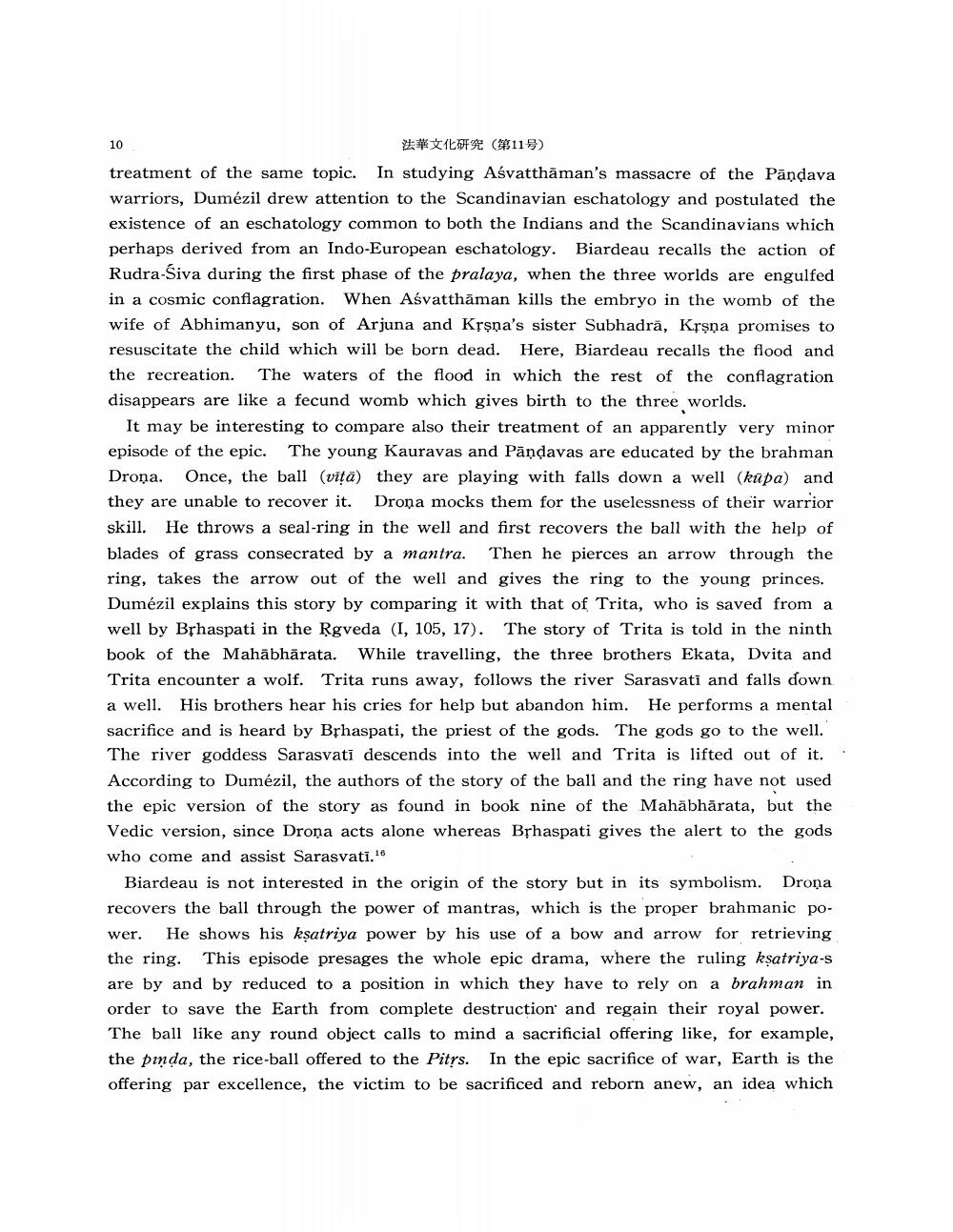________________
10.
法華文化研究 (第11号)
treatment of the same topic. In studying Aśvatthaman's massacre of the Pandava warriors, Dumézil drew attention to the Scandinavian eschatology and postulated the existence of an eschatology common to both the Indians and the Scandinavians which perhaps derived from an Indo-European eschatology. Biardeau recalls the action of Rudra-Śiva during the first phase of the pralaya, when the three worlds are engulfed in a cosmic conflagration. When Asvatthaman kills the embryo in the womb of the wife of Abhimanyu, son of Arjuna and Kṛṣṇa's sister Subhadrā, Kṛṣṇa promises to resuscitate the child which will be born dead. Here, Biardeau recalls the flood and the recreation. The waters of the flood in which the rest of the conflagration disappears are like a fecund womb which gives birth to the three worlds.
It may be interesting to compare also their treatment of an apparently very minor episode of the epic. The young Kauravas and Pandavas are educated by the brahman Drona. Once, the ball (vița) they are playing with falls down a well (kupa) and they are unable to recover it. Drona mocks them for the uselessness of their warrior skill. He throws a seal-ring in the well and first recovers the ball with the help of blades of grass consecrated by a mantra. Then he pierces an arrow through the ring, takes the arrow out of the well and gives the ring to the young princes. Dumézil explains this story by comparing it with that of Trita, who is saved from a well by Brhaspati in the Rgveda (I, 105, 17). The story of Trita is told in the ninth book of the Mahabharata. While travelling, the three brothers Ekata, Dvita and Trita encounter a wolf. Trita runs away, follows the river Sarasvati and falls down a well. His brothers hear his cries for help but abandon him. He performs a mental sacrifice and is heard by Bṛhaspati, the priest of the gods. The gods go to the well. The river goddess Sarasvati descends into the well and Trita is lifted out of it. According to Dumézil, the authors of the story of the ball and the ring have not used the epic version of the story as found in book nine of the Mahabharata, but the Vedic version, since Drona acts alone whereas Bṛhaspati gives the alert to the gods who come and assist Sarasvati,16
Biardeau is not interested in the origin of the story but in its symbolism. Drona recovers the ball through the power of mantras, which is the proper brahmanic power. He shows his kṣatriya power by his use of a bow and arrow for retrieving the ring. This episode presages the whole epic drama, where the ruling kṣatriya-s are by and by reduced to a position in which they have to rely on a brahman in order to save the Earth from complete destruction and regain their royal power. The ball like any round object calls to mind a sacrificial offering like, for example, the pinda, the rice-ball offered to the Pitys. In the epic sacrifice of war, Earth is the offering par excellence, the victim to be sacrificed and reborn anew, an idea which




